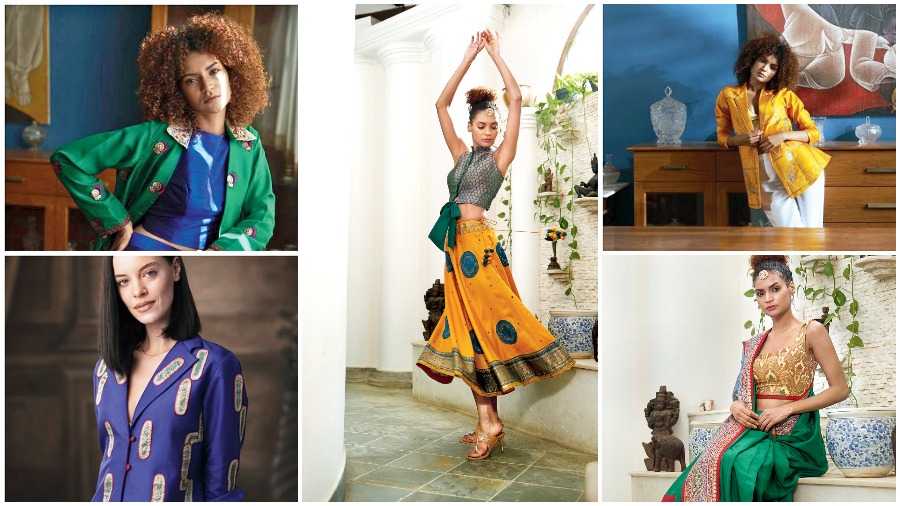What started out as a personal project with the designer creating her daughter’s wedding lehnga from a Kanjeevaram has now led to a deeper quest of contemporising heritage Indian weaves and motifs into simpler silhouettes that lend themselves effortlessly to the Indian woman’s lifestyle today. This Bangalore-based brand called Krishnamani takes up a weave or a textile from a corner of the country for each of its collections, upcycles them or designs them into newer silhouettes and transforms them into pieces that blend fashion with heritage. Their latest collection using Kanjeevaram and intricate zari detailing on jackets, skirts, kurtas and trousers is conceived to honour the cultural identity of the age-old weave as well as make it sustainable from the business point of view. In a candid chat, designer Krishnamani Ballal tells us more:
How did your journey of restoring heritage saris begin?
I have always been intrigued by the story in the history and traditions held in old weaves. I first designed a lehnga using a rich Kanjeevaram sari for my daughter’s wedding, five years ago. The stories it held, the lost motifs that belonged to families and dynasties adorned her on her big day and personified how we can carry our heritage on with us through evolving fashion.
What made you transform that into contemporary wear?
Beginning with the wedding lehnga, I followed with dinner jackets — a trousseau collection steeped in heritage. Indian weaves lend themselves into contemporary sensibilities easily. It’s a tale as old as time. It’s not the same as new styles coming in and out of our minds. I knew what I wanted to do was design across generations for generations to come.
How do you strike the balance between designing contemporary silhouettes with Indian textiles and craft cultures?
My anchor is to ensure I understand what I mean by contemporary. Contemporary, to me, is unique to your time but also timeless. The modern Indian woman has the confidence and ability to walk into a future that is truly hers and is aware of her roots. I design for that woman that makes striking the balance a relatively easy task. I don’t think of what’s trending or styles that will fade tomorrow, I think of the person first.
How do you honour craft communities and how do you balance business with that?
I source my fabric from artisans all over the country. Especially from weavers who have worked in the textile industry for generations. From a business point of view, I learn so much from them and their method of keeping motifs alive that it inspires my new collections and hence provides a continuity for business.
What is the USP of your label and what do you think sets it apart from the others in the market?
Inspired by weaves and motifs of yesteryear royal traditions, the ensembles in the collection are elegant silhouettes for the discerning woman — a bridge between the past and the future built of rich silks, Benares, heavy borders, embroidery and modern styles. This is what sets us apart.
Pictures: Courtesy of designer










